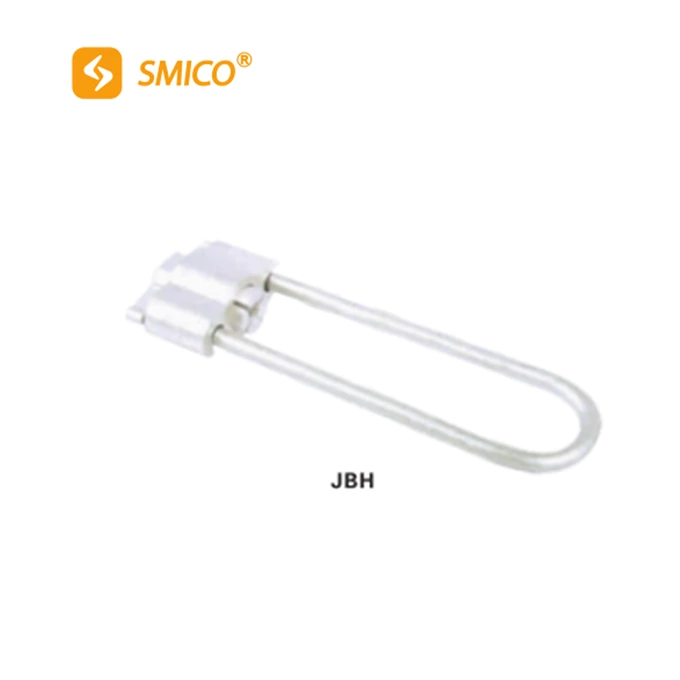Treatment Measures For Inclined Suspension Wires With Wedge-type Tension Clamps
Due to the undulating terrain along the transmission line, the unequal line spans, and changes in temperature, ice and other loads, the ground wires on both sides of the suspension point of the linear tower have different hanging angles (also called tilt angles). In places with large vertical spans, the hanging angle of the overhead line at the dead clamp exit may exceed the allowable value of dead end clamp overhead line, causing the additional bending stress to increase, causing the overhead line to be damaged at the dead end clamp with eye hook exit, causing broken strands or wires, so it is necessary to check the hanging angle of the overhead line to ensure that it does not exceed the limit. The hanging angle of the conductor occurs when there is a large sag. The hanging angle in operation is generally the average of the hanging angles on both sides.
The dead end loop clamp exit angle is the acute angle between the tangent direction of the arc at the dead end tension clamp exit and the center line of the fiber optic dead end clamp hull cable duct. It is related to the length of the conductor fixed dead end clamp, the starting position of the arc and the curvature radius R of the cable trough. When the conductor is suspended on the suspension clamp, due to the different spans and the height difference of the tower, the suspension angle of the conductor is variable, and the suspension angles of the conductors on both sides of the suspension clamp are not equal, which causes the clamp to deflect on the vertical plane relative to the insulator string. Wire suspension angle - the acute angle θ between the tangent direction of the arc at the contact point between the conductor and the outer side of the clamp and the horizontal line. When the clamp is in a horizontal position, the outlet angle of the clamp is equal to the conductor suspension angle.
When the result does not meet the required value, the measures that can be taken are to adjust the tower position or tower height to reduce the height between the two suspension points, thereby reducing the suspension angle of the suspension clamp on one or both sides to reduce the use tension of the conductor in the tension section, that is, to relax the wire; or use a suspension clamp with a larger suspension angle; or use a double suspension clamp; use pre-interlaced wire protection wire, etc.

